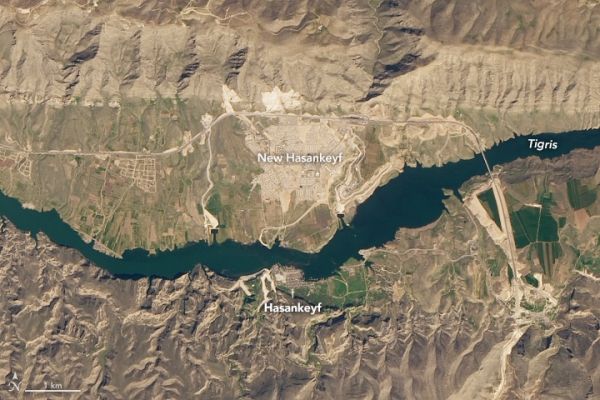One of the oldest continuously inhabited settlements in the world, Hasankeyf, has been home to more than 20 cultures over the past 12,000 years. Early settlers carved caves into the surrounding limestone cliffs. Romans built a fortress to monitor crop and livestock transportation. Travelers on the Silk Road often stopped in the area to trade during the Middle Ages.
Remnants of past cultures have been preserved for thousands of years in Hasankeyf, which was absorbed by the Ottoman Empire in the 1500s and has remained part of Turkey ever since. But those artifacts—thousands of human-made caves and hundreds of well-preserved medieval monuments—may soon be underwater. A new dam and reservoir threatens to drown the city.
Located about 56 kilometers (35 miles) downstream of Hasankeyf, the approximately 135-meter (440-foot) tall Ilisu Dam is expected to provide 1,200 megawatts of electricity (around 1.5 percent of Turkey’s total power-generating capacity). The dam is part of Turkey’s Southeastern Anatolia Project, which consists of 19 hydroelectric plants and 22 dams on the Tigris and Euphrates Rivers. The effort is designed to help promote economic growth and energy independence for the country. But there will also be a cost.
Continue reading at NASA Earth Observatory
Image via NASA Earth Observatory


